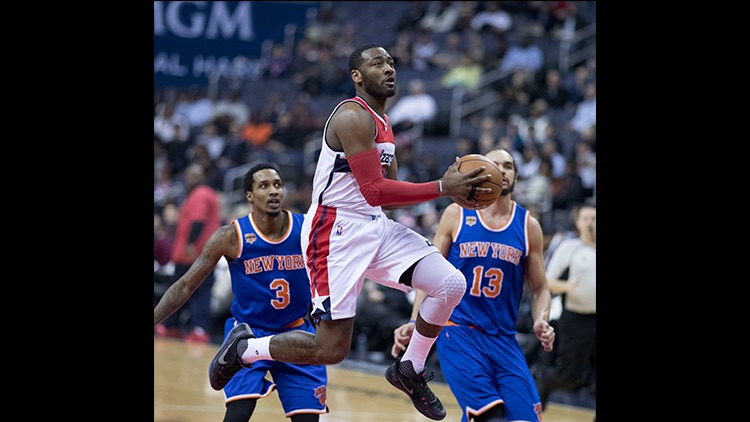Seeing the Future of Media Through the Lens of Sports

Every year during the upfront (and now, NewFront) season, I think about the state of the media industry — what has happened over the last year and how the media landscape will shift during the next one. My interest stems from my time as an AOL executive during the 1990s, when we were propelled by a vision of what was possible with the screech of a modem and the click of a mouse.
These days, in my role as the majority owner of five professional sports teams and Monumental Sports and Entertainment, I mostly experience the future of media through the lens of sports. Professional and college sports teams still have the upper hand when it comes to negotiating media deals and rights because they remain the only live programming that is still in high demand by consumers.
This opportunity led Monumental to launch the first of its kind over-the-top (OTT) regional sports network, which will be the official home for emerging sports programming focused on reaching non-cable audiences like millennials and Generation-Z consumers.
Winning Moves
I often say that to be successful, media companies should be run more like sports teams. They should have a subscription model (i.e., season ticket holders), as well as incremental revenue (tickets purchased for individual games) and commerce revenue streams (merchandise). Sports-team owners have also been able to break into new-but-related categories like fantasy sports and eSports to take advantage of emerging revenue streams, and they’re using DTC (direct to consumer) to stay in front of millennials and other younger consumers who are watching sports in new ways.
This multichannel strategy is not new in the sports world, but it supports team loyalty far beyond the stadium or arena and outside of the regular season and brings in new fan bases of different generations.
Interestingly, in February, Bloomberg reported that Netflix posted a job for an executive to “oversee the licensing of shows for books, comics and toys, and forge partnerships with retailers,” signaling that the company is considering additional revenue streams outside of its content subscription model. As the media speculated, it is fair to assume that Netflix is finding new ways to monetize its 100 million paid subscribers.
The smarter way to stay on top of broadcasting and cable industry. Sign up below
The loyalty and engagement I see in the sports world has disappeared for many broadcast and cable networks, except a select few like HBO, which have managed to remain more than just relevant, but highly anticipated. In 2016, paid television subscriptions declined by 2.05 million, double the 1.16 million decline in 2015 as more consumers consume content online. Pretty obviously, this decline began soon after new online-only media companies like Netflix and Hulu launched in 1997 and 2007.
So what is next for media? Will consumers continue to juggle dozens of subscriptions? Will Netflix, Hulu, and Amazon Prime continue to steal market share from traditional television? And will cable companies reinvent themselves to stop the migration? I think to some extent, we will see all of these things happen over the next few years, but I also think media companies should pay attention to how the tough-to-reach Generation Z is consuming content on social media channels.
New Platforms Gain Fans
Every day there are 100 million hours of video watched on Facebook, 8 billion video views on Snapchat, and 5 billion video views on YouTube. These numbers are staggering and growing. And since these numbers were reported, both Instagram and Facebook have added additional video content through their respective Stories feature. Earlier this year, TechCrunch reported that “25 weeks since launching, Instagram Stories had reached 150 million daily users.”
Twitter has also made the bold move into digital content in an effort to monetize its existing user base. Last year, it surprised many when it bought the rights to stream NFL Thursday Night Football games — a right that this season was purchased for $50 million by Amazon Prime.
Finally, there is Snap. Since its highly anticipated IPO, the self-described “camera company” has been slow to make many major announcements. One thing is for certain, though: Whether you are bullish or bearish on the stock, Snapchat’s largest and most loyal user base is the impossible-to-find Generation Z.
Generation Z consumers aren’t even cord-cutters, they are “cord-nevers,” having never subscribed to cable in their lives. Snapchat seems to be slowly moving in the direction of Amazon Prime and Netflix by announcing a deal with A+E Networks in February to release original content on the platform for its “mobile-first audience,” but it is to be determined if original content will be a money-maker for the company.
Similar to the early days of the internet, we are experiencing an explosion of media sources. What will next year’s upfront and NewFront season look like? Will we still be talking about the rise of social media? Will some of the most powerful content channels be Facebook and Snap or will the cable networks find new ways to combat their eroding consumer bases?
Living and working at the intersection of sports and media provides a unique window into what’s working now and what could ultimately capture hearts and minds in the future. I, for one, will continue to see how the evolving media landscape can elevate sports and at the same time, what media can learn from sports’ winning formula.
Ted Leonsis is founder, chairman and CEO of Monumental Sports and Entertaiment, owner of the NBA’s Washington Wizards and the NHL’s Washington Capitals.
